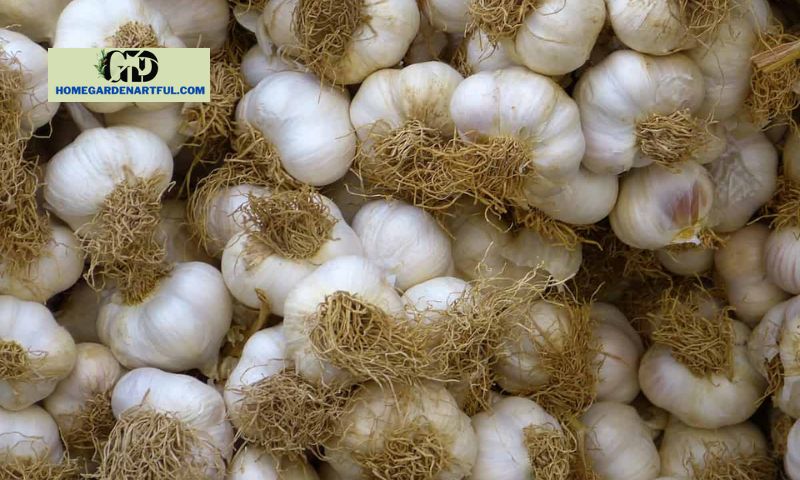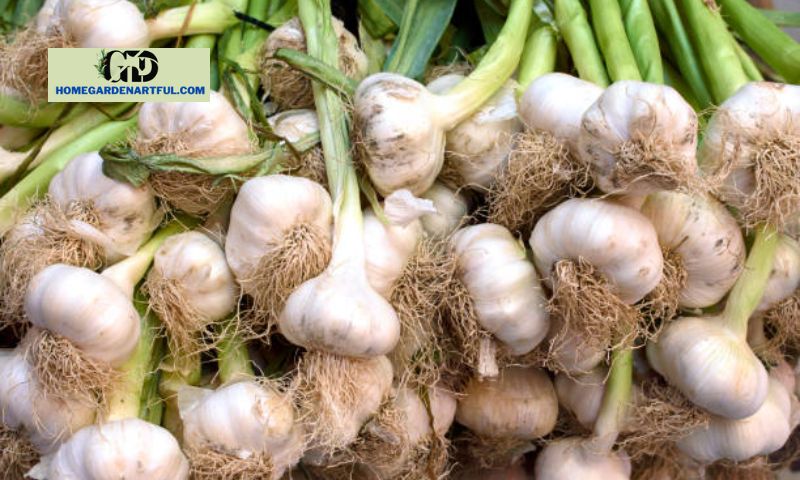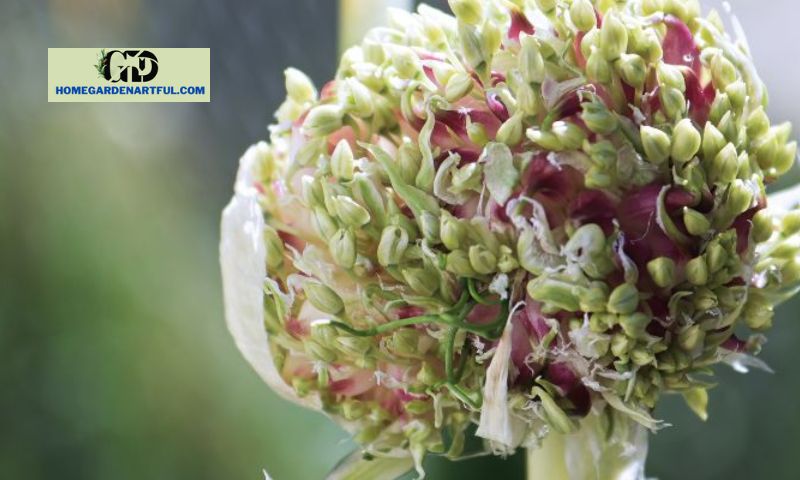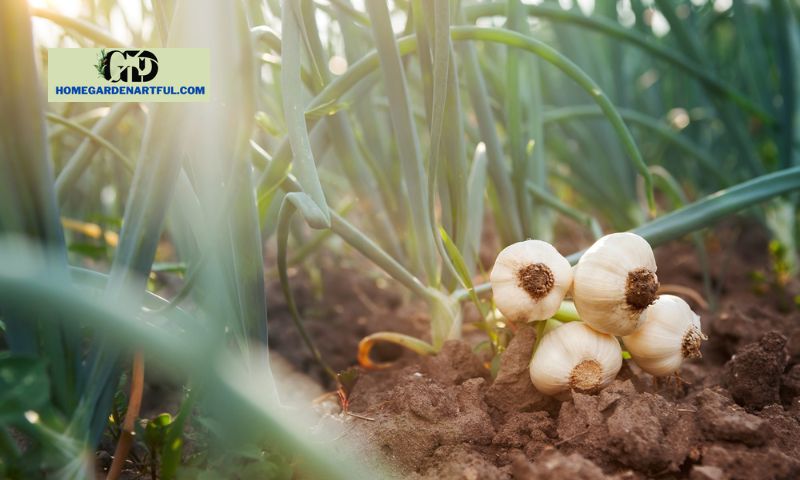How many are Garlic Growing Stages? One of those vegetables that you either love or despise is garlic. Although garlic has a very distinctive flavor, most people avoid eating it due to its odor. There is no doubt that this Allium species is one of the most popular ones to cultivate in backyard gardens. Homegardenartful.com will go over the 7 stages of garlic growth and what to anticipate at each stage for those gardeners out there who wish to grow their own garlic.
The 7 Garlic Growing Stages

1. Germination
Germination marks the start of the garlic plant’s life cycle. However, there is one difference between the germination of garlic and other vegetables or plants: each plant might yield anywhere between 6 and 15 cloves.
These cloves are actually seeds that will grow into bulbs with anything from 6 to 15 cloves per. Just how amazing is that?
We don’t sow garlic seeds mostly because, well, there aren’t any!
Say what? You must keep in mind that this vegetable has been raised from the beginning of time (about 4,000 years ago).
As time went on, this vegetable lost its capacity to produce seeds. Even though there are still some cultivars that bloom throughout their lives, they won’t produce seeds since they pass away before doing so.
You must select the variety of garlic before planting it. Why? Some kinds are better suited for planting in the spring, while others can be planted in the fall.
The cloves will hibernate for two to three months if they are planted in the fall, or before they develop a sprout. They will concentrate their efforts on developing a strong root system that will enable them to survive the winter.
2. Green or Spring Garlic

Garlic can be harvested in the spring or while it is still green. Remember that all the bulbs below the soil line are still in the early stages of development.
You should give spring garlic a try if you enjoy green onions. It has a mature garlic flavor and may be utilized in a variety of recipes, including green garlic toast and risotto with mushrooms and spring garlic.
The most important thing to realize about green garlic is that it cannot be stored the same way as mature bulbs. You may either use it fresh or store it in the refrigerator and use it within a week.
3. Scapes
The flower stalks of the Allium sativum plant are what you commonly mistake for scapes when you see them on store shelves.
They are strong and end in long flower buds. If you don’t pick your scape now, the bud will open and develop into flowers even though it is still unopened.
Why should the scapes be removed? The flavor of scapes is the first and, for some producers, the most crucial factor. They can be grilled or turned into a delectable soup!
Stimulating the bulbs to grow larger is another factor that is crucial in the cultivation of garlic.
Garlic scapes can be picked after you see the first loop on the stalk. Your garlic is letting you know it will be ready for plucking in approximately a month by producing the scapes.
4. Young Bulb
Garlic has the advantage that you can pick the bulbs even before they are fully developed. Although they don’t taste as strong as mature bulbs, their storage capacity is different.
It should be consumed immediately or kept in the refrigerator, where it can be kept for up to a week.
These bulbs won’t be as large as mature ones, of course. The skin of immature bulbs is different from that of mature bulbs in that it is leathery and moist, as opposed to the latter’s skin, which can be referred to as papery and dry.
5. Aged Bulb
The mature development stage of garlic production is here where it gets really essential!
How can you know when your bulbs have fully grown?
When garlic bulbs are ripe, the stems are strong and remain erect, the leaves are meaty, as well as the heads have varied skin.
Once the garlic is fully prepared for harvest, the foliage begins to turn yellow before eventually becoming brown.
When compared to scapes and younger bulbs, mature bulbs have a different flavor and storage capacity. Your garlic now has a distinct, powerful flavor, and you may store it to keep it fresh for a long time.
6. Flowering

The scapes straighten upwards and the blossom appears when the garlic enters the flowering stage. Additionally, you can see small bulbils that can be saved and planted the following season.
The fact that these bulbils adapt to local conditions and become disease-resistant is their best quality. However, the development of the bulbils into mature bulbs can be quite difficult.
The Allium sativum plant may produce seeds at this time, but the seeds, as previously said, won’t germinate.
I strongly advise using cloves rather than bulbils or seeds to grow this Allium species.
7. Harvest
Picking garlic when less than half of the leaves have turned yellow is crucial if you want to avoid the bulbs of the plant rotting while they are being kept.
The bulbs may open if you wait too long to harvest them, and if you leave them in moist soil they may rot. While harvesting your sativum plant, exercise caution and pay close attention to prevent harming the base.
To get your garlic ready for storage, remove any extra soil from around the bulbs. Don’t remove the foliage or stems yet; instead, choose a cool, well-ventilated location for your garlic.
Remove the stems and outer layers which still have soil on after all the garlic parts are completely dry.
After harvest, choose the largest and healthiest bulbs and store them in a cool, dry area if you wish to grow garlic again the following year.
Conclusion
You must be aware of the stages of garlic growth if you enjoy the flavor and wish to attempt growing this vegetable yourself.
You’ve seen all the details on the numerous growth stages and effective garlic cultivation, so if you heed our recommendations, I’m confident you’ll have a strong and delicious harvest.


